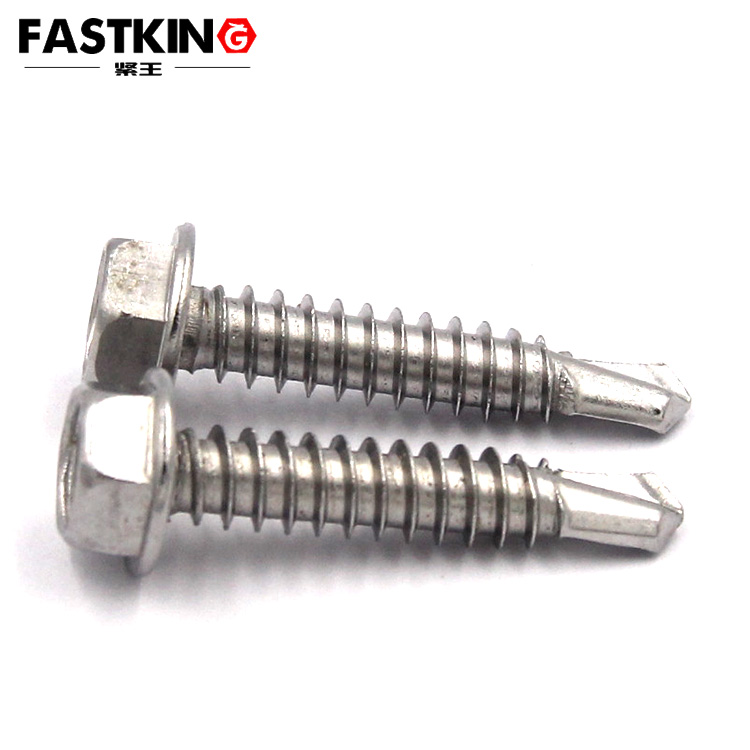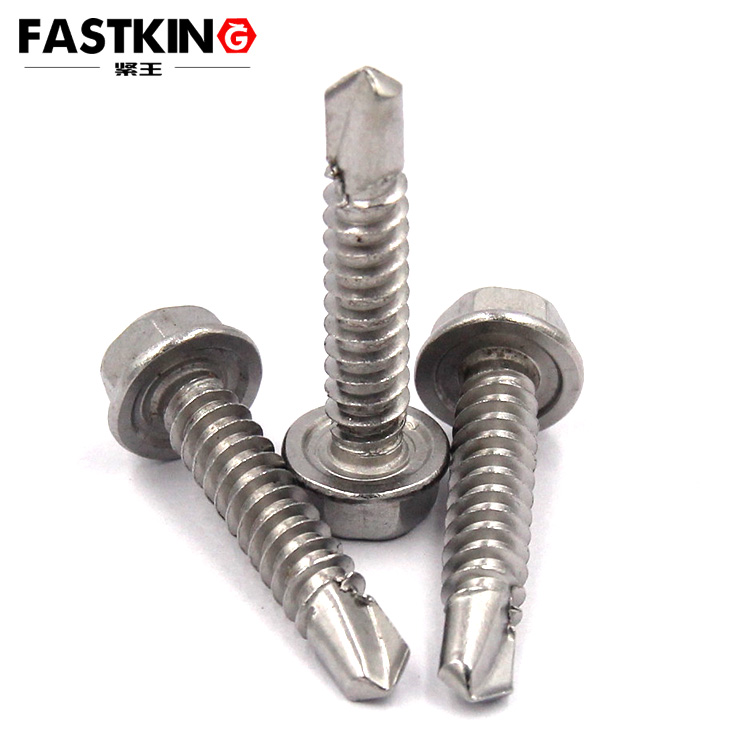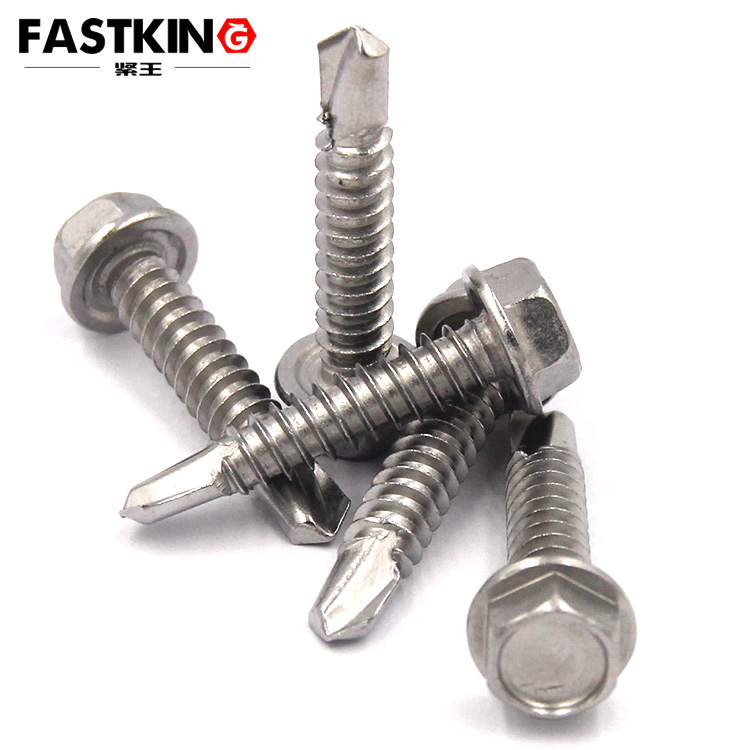Introduction
Hex flange self-drilling screws are an innovative type of fastener that integrates drilling, tapping, and fastening into a single process. They have become an indispensable tool in the modern construction industry. By combining three essential functions into one, these screws significantly enhance work efficiency and reduce labor costs, making them the preferred solution for fastening tasks in construction and beyond.

Features of Hex Flange Self-Drilling Screws
1. Hex Flange Design
The head of a hex flange self-drilling screw features a hexagonal flange shape. This design not only facilitates tightening with wrenches and other tools but also increases the contact area between the screw head and the installation surface. This enhances the screw's anti-slip capabilities and overall fastening stability.
2. Self-Drilling Function
The tail of the self-drilling screw is designed like a twist drill bit. During assembly, it can automatically create a center hole and tap threads directly into the material. This eliminates the need for pre-drilling, saving construction time and increasing installation efficiency.
3. Materials and Surface Treatments
Hex flange self-drilling screws are typically made from high-strength materials such as carbon steel or stainless steel (e.g., SUS410, SUS304, SUS316). They are available with various surface treatments, including galvanizing, nickel plating, and Dacromet, to meet corrosion resistance requirements in different environments.
Applications

1. Construction Industry
Hex flange self-drilling screws are widely used in construction, particularly for connecting steel structures and corrugated steel sheets. For example, they are ideal for fixing steel roofing sheets, where they can quickly complete drilling and fastening tasks, improving construction efficiency. They are also used for securing thin metal panels in temporary buildings, reducing construction time and costs.
2. Mechanical Manufacturing
In mechanical manufacturing, these screws are used for assembling and securing machinery components. Their high strength and stability make them capable of withstanding significant vibrations and stresses, ensuring the stable operation of machinery.
3. Automotive Industry
Hex flange self-drilling screws play a crucial role in automotive manufacturing, especially for fastening vehicle body parts. Their self-drilling design allows for direct penetration into the material, forming a secure connection. The hex head design facilitates tightening with tools, ensuring the stability and safety of vehicle components.
4. Other Applications
These screws are also extensively used in the installation of metal curtain walls, lightweight metal partitions, and plastic-steel windows and doors. They are suitable for combining steel sections, iron plates, and other metal materials in structural steel projects.
Usage Methods
1. Tool Selection
Installation of hex flange self-drilling screws typically requires a hex wrench or an electric screwdriver. Choosing the right tool enhances installation efficiency and reduces the risk of tool slippage.
2. Installation Steps
1. Clean the Installation Surface: Before installation, ensure the surface is clean and free of oil, dirt, and other impurities to ensure proper fastening.
2. Locate the Installation Position: Determine the screw's position based on the material to be installed.
3. Drill and Fasten Directly: Align the screw with the installation position and rotate it clockwise using a hex wrench or electric screwdriver. The self-drilling tail will automatically create a center hole and tap threads into the material. Continue tightening until the desired fastening torque is achieved.
4. Check Fastening Tightness: After installation, inspect the screw's tightness to ensure it is secure and free of loosening.
Precautions
1. Avoid Over-Tightening: Over-tightening can damage the screw head or deform the installation surface. Follow the specified torque for tightening.
2. Select the Right Material: Choose the appropriate screw material based on the environment. For example, stainless steel screws are suitable for humid conditions, while carbon steel screws are ideal for dry environments.
3. Regular Inspection and Maintenance: Periodically check the screw's tightness during long-term use and retighten if necessary to ensure connection stability.
Conclusion

Hex flange self-drilling screws, with their unique design and efficient functionality, play a vital role in various industries, including construction, machinery, and automotive manufacturing. Their hex flange design and self-drilling capabilities not only enhance installation efficiency but also improve fastening stability and reliability. By selecting the right tools, cleaning the installation surface, drilling and fastening directly, and conducting regular inspections and maintenance, hex flange self-drilling screws can provide reliable fastening solutions in diverse applications. As material science and manufacturing processes continue to advance, the performance of hex flange self-drilling screws will further improve, and their application scope will expand even more.
